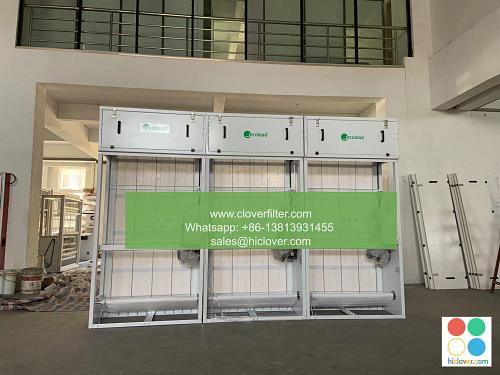The Science Behind Air Filter Components: How They Work

The Science Behind Air Filter Components: How They Work
Understanding the Components of an Air Filter
Air filters are an essential component in various industries, from HVAC systems to industrial processes, medical equipment, and even household furniture. The effectiveness of an air filter relies on its ability to capture contaminants, particles, and pollutants from the air, but how do these filters work? In this article, we’ll delve into the science behind air filter components, exploring the mechanics and technology behind their operation.
Mechanisms of Air Filter Action
Air filters use various mechanisms to trap particles and contaminants, including:
-
Mechanical Interception: This occurs when particles and contaminants collide with the fibers or membranes of the filter, becoming trapped and prevented from passing through.
-
Adhesion: Some filters use adhesives or electrostatic charges to attract particles, which are then caught and removed from the air.
-
Electrostatic Precipitation: This method utilizes an electrical charge to attract and trap particles, making them easier to capture.
- Cyclonic Separation: High-speed air streams generate centrifugal forces, separating particles and contaminants from the air stream.
Key Air Filter Components
1. Filter Media: The heart of an air filter is the filter media, which can be made from various materials, including:
* **Fibers**: Spun glass, polyester, or cotton fibers are used in various types of filters, from pleated to spun-felt.
* **Membranes**: Thin layers of polymer or metal are used in membrane filters, providing high-efficiency particle capture.
* **Cartridges**: Replaceable cartridges often feature pleated or spun-felt filter materials.2. Frame and Housing: The frame and housing provide structural support and protection for the filter media, ensuring proper airflow and accessibility.
3. Adhesives and Fasteners: Chemical adhesives and fasteners hold the filter media in place, maintaining the filter’s structural integrity and ensuring efficient airflow.
Application Areas
Air filters have numerous applications across various industries, including:
1. HVAC Systems: Air conditioning and heating, ventilation, and air conditioning (HVAC) systems rely on air filters to provide clean air for building occupants.
2. Industrial Processes: Industrial processes, such as manufacturing and processing, require air filters to remove pollutants, particles, and contaminants from the air.
3. Medical Equipment: Air filters are crucial in medical equipment, like ventilators, surgical suites, and laboratory equipment, to prevent contamination and ensure patient safety.
4. Household Appliances: Air filters are used in various household appliances, such as air purifiers, vacuum cleaners, and HVAC systems, to improve air quality and reduce allergens.
5. Automotive and Transportation: Air filters are used in vehicles, aerospace, and marine applications to improve air quality, reduce emissions, and enhance performance.
By understanding the science behind air filter components, industries can optimize their use of these crucial devices to ensure clean air, improved performance, and enhanced public health and safety.
Conclusion
Air filters play a vital role in various industries, relying on a combination of mechanisms, materials, and technologies to capture particles and contaminants from the air. By grasping the intricacies of air filter components, organizations can make informed decisions when selecting the right filters for their specific needs, resulting in improved air quality, reduced maintenance, and increased efficiency.
I’m happy to help! What is your prompt? Do you have a specific topic or question in mind that you’d like me to assist with?

